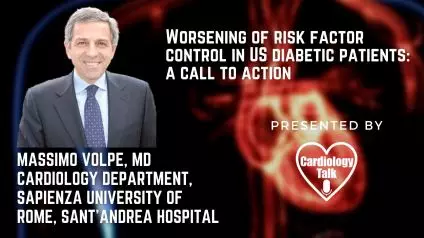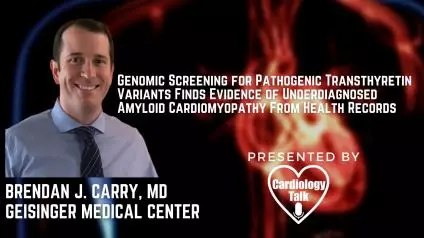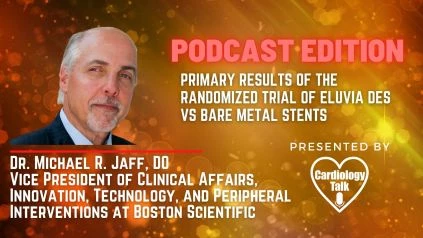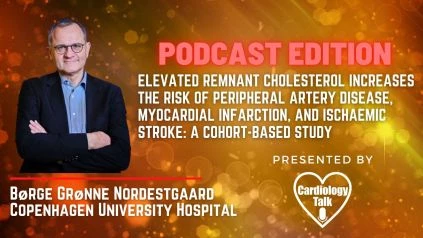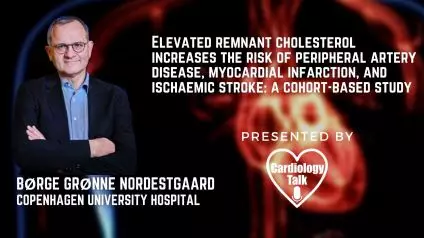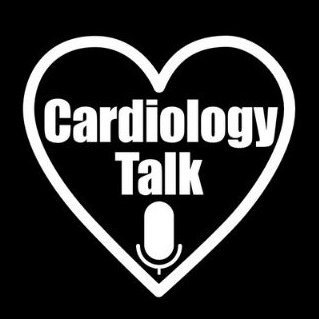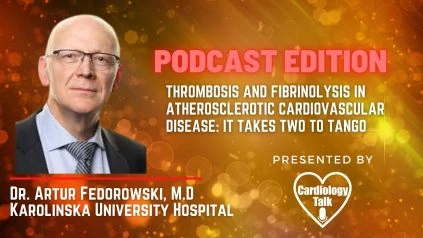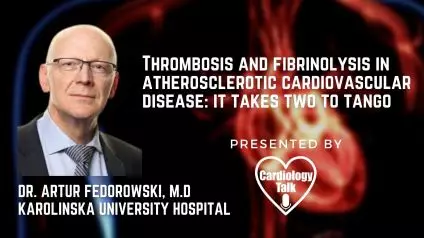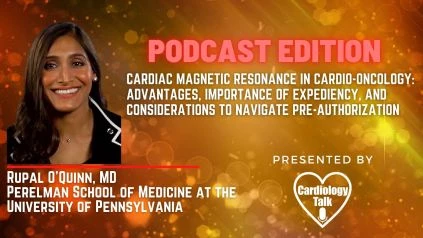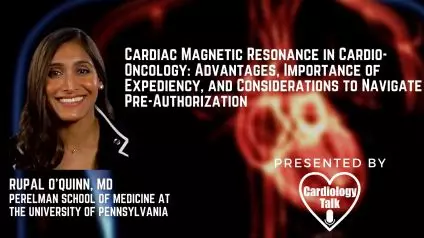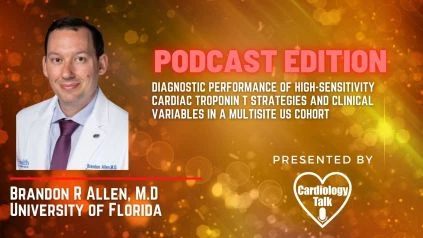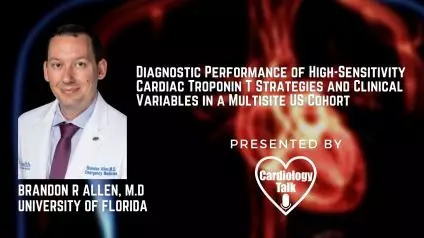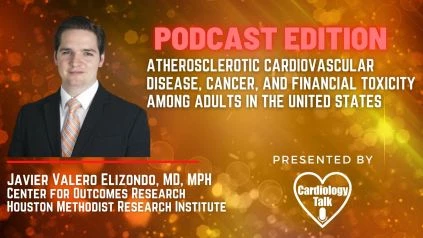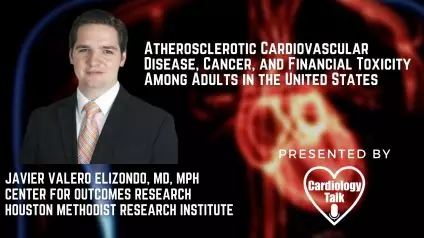Massimo Volpe, MD- #SapienzaUniversityRome @SapienzaRoma #SantAndreaHospital @SSMedInt #Cardiology #Diabetes #Research
Dr. Massimo Volpe, MD, is a professor at Rome's Sapienza University. Dr. Volpe specializes in Cardiology, Internal Medicine, Electrocardiogram, Arterial Hypertension, and Cardiovasular Prevention.
Link to Article:
https://academic.oup.com/eurheartj/article/42/33/3120/6330649
Points to remember-
The National Health and Nutrition Examination Survey (NHANES) conducted two cross-sectional studies on the US population across ten cycles (from 1999 through 2018). The goals of these research were to analyze trends in glycaemic, lipid, and blood pressure (BP) control in diabetic patients1, as well as to estimate the age-standardized prevalence of diabetes and control of cardiovascular (CV) risk factors in the general population2.
Trends in glycaemic, blood pressure, and cholesterol management were non-linear in a group of 6653 diabetic patients. Glycemic control (glycated haemoglobin level 7.0%) was reached in a higher percentage of patients in 2007–10 [57 percent; 95 percent confidence interval (CI), 53–62] compared to 1999–2002 (44 percent; 95 percent CI, 39–49), but then fell to 50% (95 percent CI, 46–55) in 2015–18. When a more severe BP target of 130/80 mmHg was examined, the percentage of participants who achieved BP control increased from 64 percent (95 percent CI, 59–68) in 1999–2002 to 74 percent (95 percent CI, 71–77) in 2011–2014, but then decreased to 70 percent (95 percent CI, 67–74) in 2015–18. The percentage of participants who achieved lipid control [non-high-density lipoprotein (HDL) cholesterol level 130 mg/dL in sensitivity analyses, and low-density lipoprotein (LDL) cholesterol level 100 mg/dL in sensitivity analyses] increased from 25% (95 percent CI, 21–30) in 1999–2002 to 52 percent (95 percent CI, 49–55) in 2007–10, before leveling off (56 percent in 2015–18; 1
In the diabetic population, glycemic, blood pressure, and cholesterol control were achieved in 9 percent (95 percent CI, 7–12) of participants in 1999–2002, rising to 25 percent (95 percent CI, 21–29) in 2007–10, and then maintaining stable at 22 percent (95 percent CI, 18–27) in 2015–18.
The estimated age-standardized prevalence of diabetes increased considerably from 10% (95 percent CI, 9–11) in 1999–2000 to 14 percent (95 percent CI, 13–16) in 2017–18 (P for trend 0.001) in the general population of 28 143 participants in the second study. During the years 2015–18, 67 percent (95 percent CI, 63–70), 48 percent (95 percent CI, 45–52), and 60 percent (95 percent CI, 54–65) of persons with diabetes met their HbA1c, blood pressure (130/80 mmHg), and LDL cholesterol (100 mg/dL) goals, respectively. Only 21% of the population (95 percent confidence interval, 15–27) met the goals for all three risk factors, with rates much lower in young adults aged 18–44 years (7%) and non-Hispanic black adults (7%). (12 percent ). 2
Comment on 'Trends in Diabetes Treatment and Control in US Adults, 1999–2018,' published in the N Engl J Med, doi:10.1056/NEJMsa2032271, and 'Trends in Diabetes Prevalence and Risk Factor Control in US Adults, 1999–2018,' published in JAMA, doi:10.1001/jama.2021.9883.
Comment-
In the most recent NHANES cycle, these cross-sectional studies1,2 demonstrate negative trends in the rate of effective diabetes and CV risk factor control. The rising prevalence of diabetes, as well as the deterioration in diabetic patients' achievement of established glycaemic, lipid, and blood pressure treatment targets, is cause for concern, especially given the significant CV burden associated with diabetes. Although participants' age, race, and ethnicity remained stable, while their education, income, and health insurance improved, the prevalence of diabetes increased significantly from 1999–2000 to 2017–18, and only 50% 1 and 67 percent 2 of diabetics in the two analyses achieved adequate glycemic control. Despite increasingly severe suggested targets, BP control deteriorated and lipid management plateaued in the diabetes population1,2. 3–6
The reports of the EUROASPIRE (European Action on Secondary and Primary Prevention by Intervention to Reduce Events) V survey, which was conducted to identify risk factors in high-risk individuals with and without diabetes, echo the disappointing results seen in the US population.
Only 42 percent of the 8261 participants with a very high CV risk who took part in the EUROASPIRE V study had a blood pressure of 140/90 mmHg, 54 percent had a glycated haemoglobin level of 7.0 percent, and nearly 70 percent had LDL cholesterol of 70 mg/dL. 7
Given the numerous public campaigns, improved knowledge, and much greater availability of effective and safe treatment strategies, this finding is somewhat surprising.
Unhealthy lifestyle behaviors combined with insufficient drug therapy due to excessively low dosages of antihypertensive, lipid-lowering, and anti-diabetic drugs and underuse of combination therapies could be one factor. After a 16 percent increase from 1999–2002 to 2007–10, the usage of blood pressure-lowering medicines has stabilized in the NHANES registry. The usage of statins climbed by 28% from 1999 to 2002 to 2011–14 before leveling off. 1 After 2010, the percentage of patients receiving combined glucose-lowering and antihypertensive treatments fell, even among those with uncontrolled risk factors. Only 61 percent of participants with a glycated haemoglobin level of less than 7% and 53 percent of those with a blood pressure of less than 140/90 mmHg were given more than one medication.
This clinical apathy contrasts with the most recent guidelines' suggestions for initiating and maintaining therapy with more aggressive therapeutic techniques.
An intensified multifactorial intervention with tight glucose control and appropriate doses of renin-angiotensin system blockers, aspirin, and lipid-lowering agents in high-risk diabetic patients has shown sustained beneficial effects in terms of vascular complications and rates of death from any cause and from CV causes. 8
As a result, several recent studies and meta-analyses have backed the ‘lower, better' concept in the treatment of hypertension, diabetes, and dyslipidemia, demonstrating that tighter control of these risk factors improves CV protection significantly, prompting progressive reductions in the recommended therapeutic goals.
Despite the fact that treatment intensification necessitates careful consideration of the risk-benefit ratio, the findings of the NHANES surveys1,2 highlight the need for more intensive and integrated therapeutic strategies, particularly in high-risk patients like those with diabetes, prompting an urgent "call to action" to promote more effective prevention programs at both the population and individual levels. Public campaigns, education, and physicians should collaborate to raise awareness of the importance of diabetes prevention and risk factor control, as well as to promote healthy lifestyles, early pharmacological treatment, and better adherence to medical prescriptions.
Outside of the submitted work, M.V. discloses personal compensation from Amgen, Astra Zeneca, Daiichi-Sankyo, Menarini Int, MSD, Novartis Pharma, and Novo Nordisk for speaker bureau and/or consulting in the Advisory Board. Outside of the submitted work, C.P. reports personal fees from Acticor Biotech, Amgen, Bayer, GlaxoSmithKline, Tremeau, and Zambon, grants from AIFA (Italian Drug Agency) and European Commission, and other from the International Aspirin Foundation's Scientific Advisory Board.
